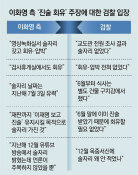Daily confirmed cases in Seoul metropolitan area hits record high
Daily confirmed cases in Seoul metropolitan area hits record high
Posted September. 16, 2021 07:32,
Updated September. 16, 2021 07:32
South Korean health authorities view the upcoming Chuseok holidays, the second time around since the outbreak of the pandemic, as the turning point for widespread infection of COVID-19. As there were many group infections generated from family gatherings during previous Chuseok and Lunar New Year holidays, the authorities are concerned that the family reunions may accelerate widespread infection of the virus.
The number of daily confirmed cases in South Korea has continued to remain at four-digit numbers for more than 70 days. Confirmed cases in the Seoul metropolitan area and Seoul reached 1,656 and 804, respectively, the highest number of cases since statistics compilation. The number of daily confirmed cases in Seoul exceeded 700 for the first time. “The Seoul metropolitan area is at high risk, where anyone can get infected anytime,” said Sohn Young-rae, team leader of Social Strategy at the Central Disaster Management Headquarters. New confirmed cases are being discovered at schools, workplaces, indoor gyms, karaokes, etc.
The ratio of confirmed cases found in Seoul metropolitan area rose to 80.5% against total community-infected cases. The number had exceeded 80% at early July, the onset of the fourth wave, and fell to 55% in mid-August, as the infection spread to other regions. Currently the number remains relatively stable for areas outside of the Seoul metropolitan area, but there is rising tension regarding populations travelling to visit families during the holiday season. The ratio of confirmed cases in areas outside the Seoul metropolitan area increased by 8% percentage after the Lunar New Year season and further led to outbreaks at workplaces.
The health authorities urged citizens to refrain from travelling or limit the hours of gatherings. Based on simulated analysis done by Korea Institute of Science and Technology (KIST), it turned out that the shorter the time for family gatherings, the less risk of COVID-19 infection. The risk of infection was 60% when people without face coverings gathered in the same room for 12 hours, but the rate was reduced to 35% for four hours.
somin@donga.com







